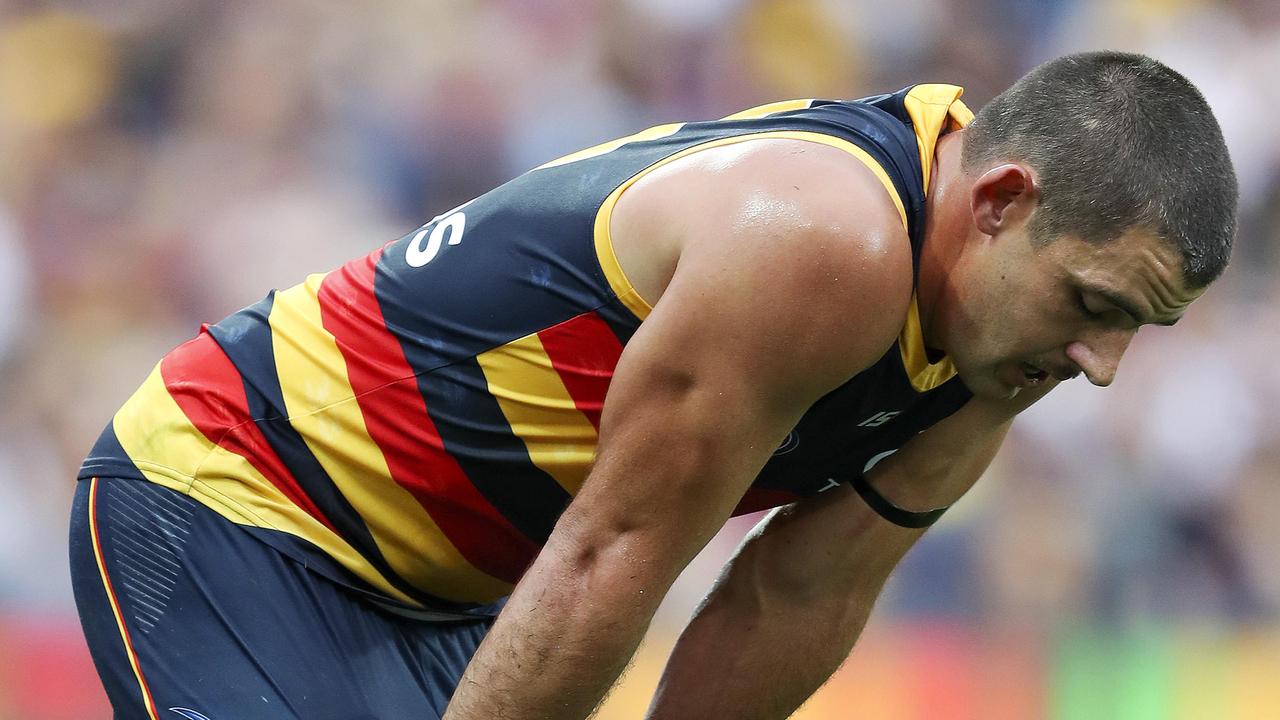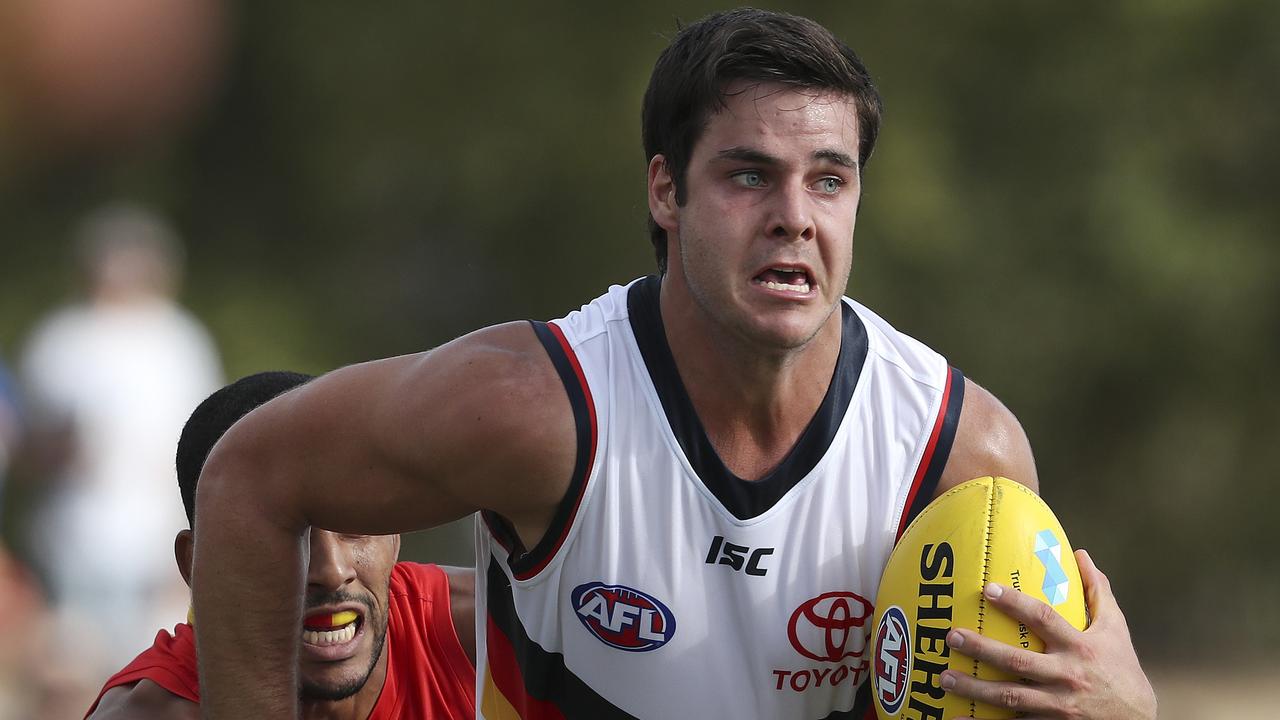Warren Tredrea column: Why Port Adelaide can’t afford to let goalkicking yips get bigger
PORT must boot its goalkicking yips or they will quickly hijack its season, writes Warren Tredrea, as executing in front of goals becomes more important than ever on a tight table.

Warren Tredrea
Don't miss out on the headlines from Warren Tredrea. Followed categories will be added to My News.
- Damning numbers show Port shooting itself in foot
- Silk’s road: From raw, skinny kid to Power force
- Round 13 teams: Watts dropped
- Spoil sport: Meet the Power’s secret weapon
- Rucci: Look of game can be improved with kicking
PORT must boot its goalkicking yips or they will quickly hijack its season.
Sitting eighth on the ladder with a solid seven and four win-loss ratio, the Power are yet to truly hit their straps in season 2018.
They’ve been solid without being outstanding, but there’s significant upside if they can fix one key area of their game — goal kicking and in particular set shot goal kicking.
Football is about taking your chances. Too often we’ve seen Port Adelaide dominate the play yet they’ve failed to hammer home their advantage by converting in front of goal.
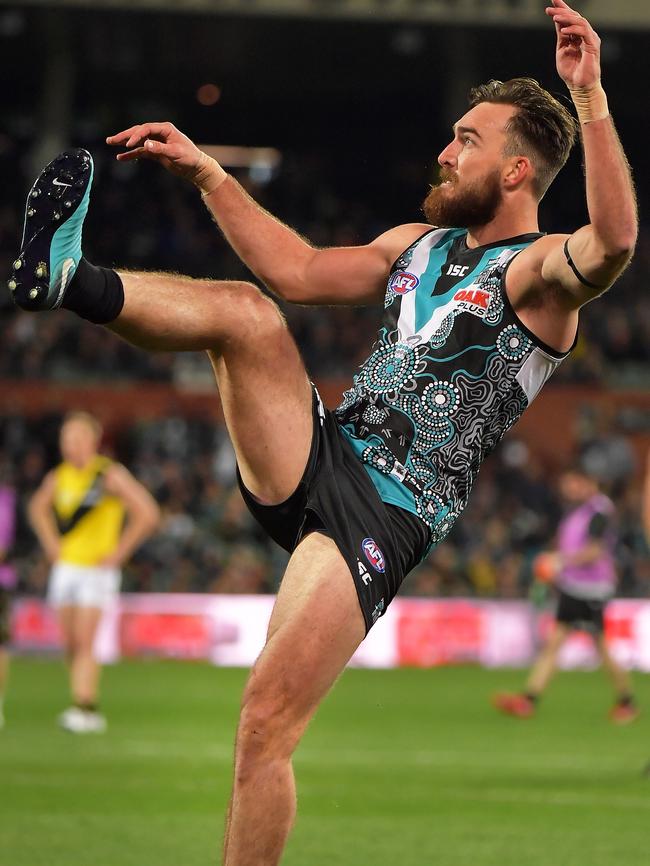
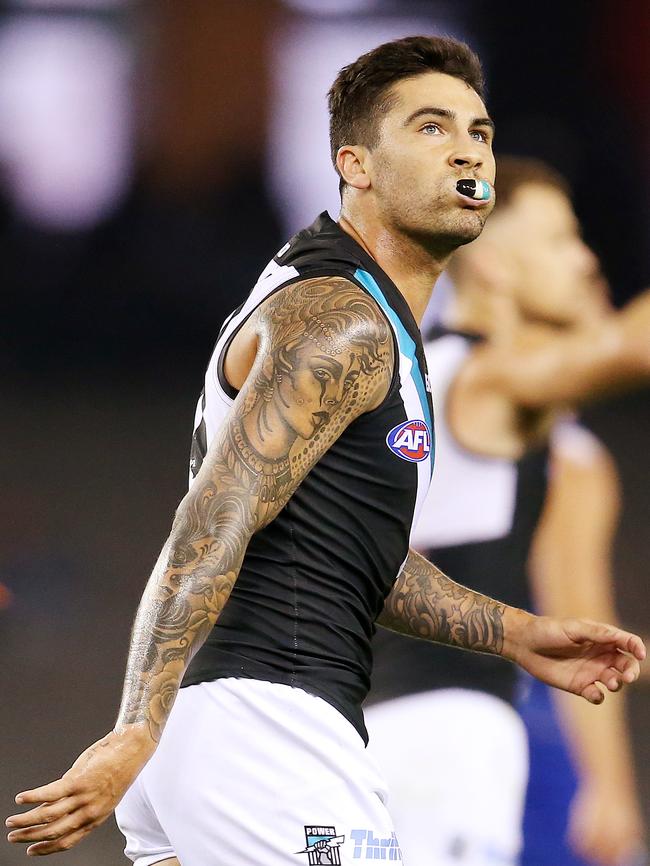
There was no better example of this than in last Friday’s match against Richmond. After dominating the Tigers in the first half they failed to finish off their good work in the second half, kicking an inaccurate 1.7 goals to leave the door ajar for a Tigers comeback.
Top-line teams finish off their opponents and never give them an inch. That’s where Port can improve and until they do, they won’t challenge for the ultimate prize.
All forwards know the pressure of having to kick a big goal, they’re also acutely aware of what it feels like to have the yips. But being able to overcome the mental battle and convert is when they really earn their money.
In 2017 the Power ranked an impressive second in defence, conceding a lowly 76 points per game and second in offence, kicking an average of 98 points.
And while they didn’t have an issue getting the ball inside 50 they’ve had their challenges retaining the ball and using their dominance to impact the scoreboard.
Enter the off-season, Port added more midfield depth but also greater avenues to goal by acquiring mature-aged recruits Jack Watts, Tom Rockliff and Steven Motlop.
Fast forward to 2018 and while their defence is holding up, conceding the same 76 points per game (ranked 7th), their points for have taken a big hit, scoring 15 fewer points per game (82.5 points) ranked 11th in the competition — well behind the top-ranked Demons (106 points per game).
Port, however, has improved its “On the Run” goal scoring from 41 per cent (15th) in 2017 to 46.4 per cent in 2018 ranked 7th.
However, set shot goal kicking remains a big issue. After converting at 51.7 per cent in 2017 they’ve slipped to 49.6 per cent in 2018.
Their individual set shot conversions also make for poor viewing.
In 2018, superstar Robbie Gray leads the way on 69.2 per cent, following him is Chad Wingard on 60 per cent but from there it drops away — Sam Gray 53.8 per cent, Jack Watts 50 per cent, Steven Motlop 33.3 per cent, Charlie Dixon 32 per cent and Justin Westhoff 25 per cent.
It’s not good enough for players who are paid to kick goals.
Every player who has played as a forward has been through a goal kicking rut. Some days it all clicks while on other days no matter what you do you can’t take a trick and they still miss.
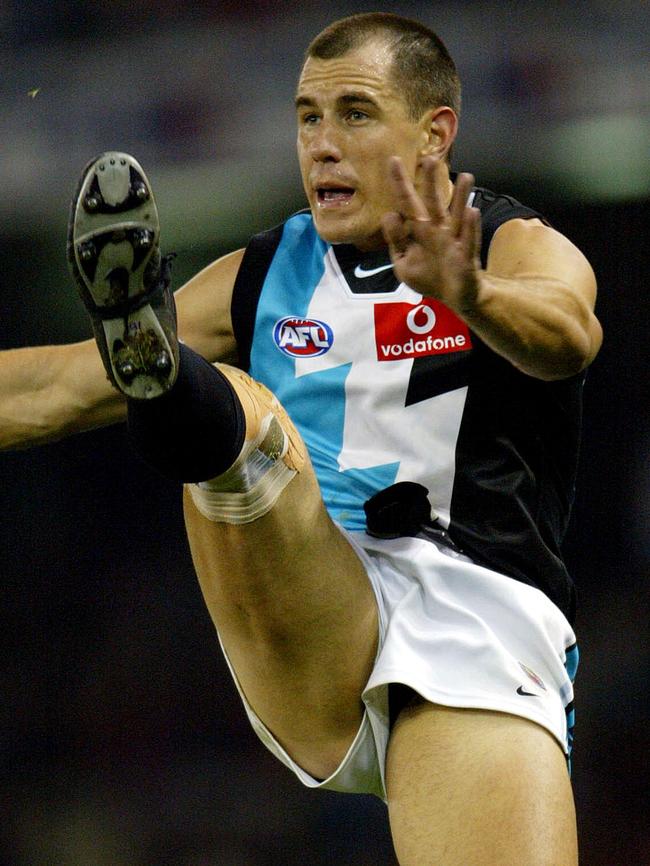
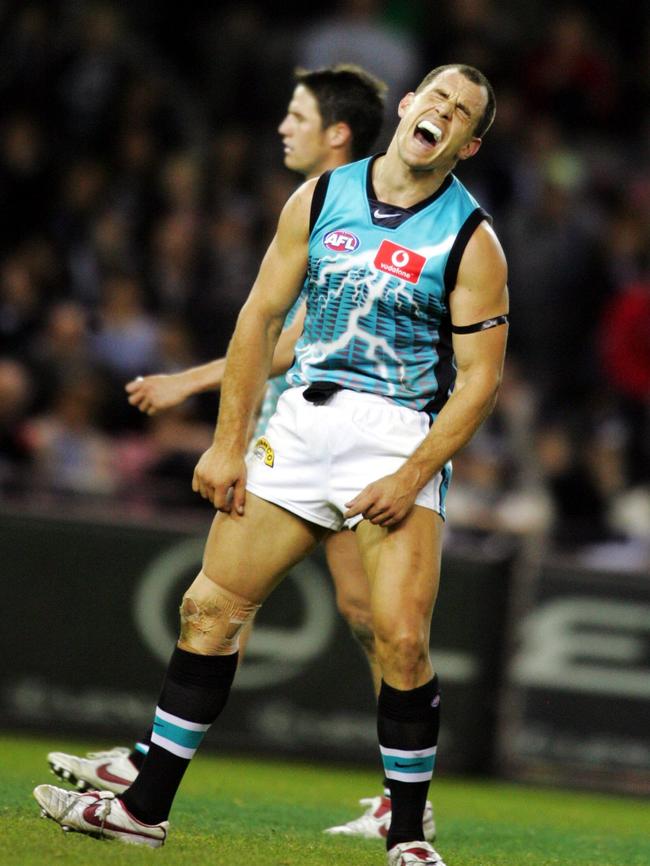
As a forward your routine needs to become second nature, from aligning yourself towards goal, to the momentum in your run up, the drop of the ball, the balls impact on your foot and lastly your follow though towards goal.
If you get this right the result takes care of itself.
Players have different routines, and as I found, belief and confidence in your routine only comes about after long hours spent kicking under match-like conditions of fatigue and external pressure on the track.
Charlie Dixon looks like a man lacking a little bit of confidence, for all the hard work he’s doing, he’s struggling to get the ball through the big sticks. But if he remains positive it will turn — he’s a beautiful kick of the ball.
The same can be said for the rest of Port’s forwards.
In 2018, from 25 shots on goal, Dixon has kicked a disappointing eight goals, 12 behinds and on five occasions he has failed to score. This is a long way short of his 2017 set-shot return of 45 goals, 22 behinds and 11 failed-to-score kicks from 78 attempts.
And while he keeps doing all the important one per centers that make him a fan favourite he needs to relax and composes himself when shooting for goal so he can finish off his work.
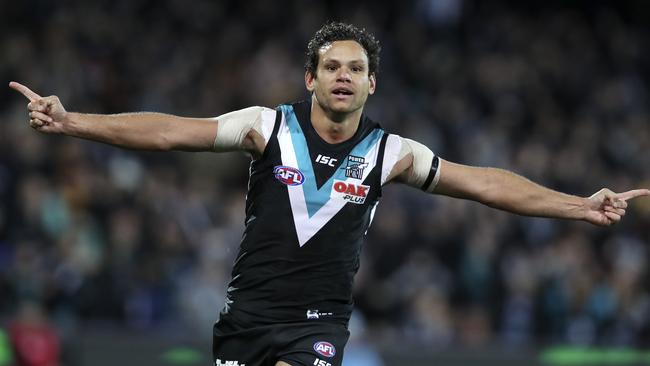
Making this harder is that Port’s appears to have gone back to 2016 when it was too Dixon conscious when going inside forward 50. In 2017 they ranked fifth with 13.5 marks inside 50 per game while in 2018 it is 15th (10.5).
Port’s forwards must also start functioning as a collective rather than as individuals. Too often I see their forwards leading into the same space towards each other rather than away from each other into the dangerous space.
Only two wins separate the fourth-ranked Cats and the 10th-placed Crows. But compounding this is the gulf in percentage that keeps getting wider. Right now it’s a massive 25 per cent.
After ticking over the halfway mark of the season and with the lead into the finals gathering momentum, executing in front of goals is becoming more important than ever.
Improving their set-shot accuracy will do two things: Help close the percentage gap from teams above them; and secondly prime their players for finals football where confident players who perform under pressure separate the best from the rest.

